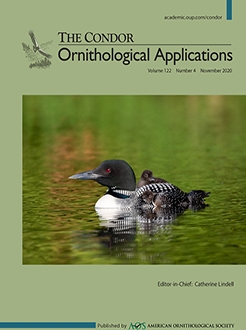Implementation and evaluation of conservation efforts requires an understanding of the habitat selection and reproductive success of endangered populations. As populations recover, established territory holders may force new arrivals into lower quality habitat, which can reduce reproductive success, especially in disturbed landscapes where suitable habitat is scarce. The endangered Western Yellow-breasted Chat (Icteria virens auricollis) population in the fragmented riparian zone of the Okanagan Valley, British Columbia, Canada, has rapidly increased in response to habitat restoration. During this population increase from 2002 to 2014, we monitored 485 chat nests in 157 breeding territories to evaluate the influences of habitat selection, habitat restoration, and brood parasitism by Brown-headed Cowbirds (Molothrus ater) on reproductive performance. We found that, in protected reference sites, breeding territories that were occupied in the early years of the study had higher percent shrub cover than territories that were first occupied in the later years of the study, indicating that chats preferred territories with high shrub cover. Conversely, in restoration sites, later-occupied territories had similarly high shrub cover as earlier-occupied territories, suggesting that restoration activities enabled chats to continually settle in territories with high shrub cover. Yet, we did not find strong evidence that nest site vegetation characteristics or habitat restoration influenced reproductive performance. Instead, the high rate of brood parasitism (49%), which reduced nest success and productivity, was the dominant influence on reproductive performance. However, this recovering population still had high daily nest survival (0.974) and productivity (2.72 fledglings per successful nest) compared with other riparian songbirds and the high parasitism rate did not prevent the population from increasing. Thus, conservation efforts for Yellow-breasted Chats should focus on restoring riparian shrubs, even within heavily developed landscapes, to increase the number of potential breeding territories, while also quantifying how brood parasitism influences reproductive performance.
LAY SUMMARY
In landscapes where undisturbed, high-quality habitat is scarce, some birds may be forced to occupy low-quality habitat. Habitat restoration may provide more high-quality habitat.
The endangered population of Yellow-breasted Chats in British Columbia increased in abundance from 2002 to 2014 in response to habitat restoration efforts. We investigated 2 questions: (1) Do chats prefer to nest in areas with certain vegetation characteristics? and (2) What effects do vegetation characteristics and parasitism by Brown-headed Cowbirds, which lay their eggs in chat nests, have on chat reproductive success?
Settlement patterns indicated that chats prefer to occupy breeding territories with high shrub cover. However, Brown-headed Cowbirds parasitized half of all chat nests, and whether or not a nest was parasitized was more important than vegetation characteristics in determining how many chat fledglings were produced.
Habitat restoration efforts provided more suitable habitat for this recovering population but did not reduce how often chat nests were parasitized. Chats in this population still have relatively high reproductive success and therefore are not as vulnerable to cowbird parasitism as other songbirds.






